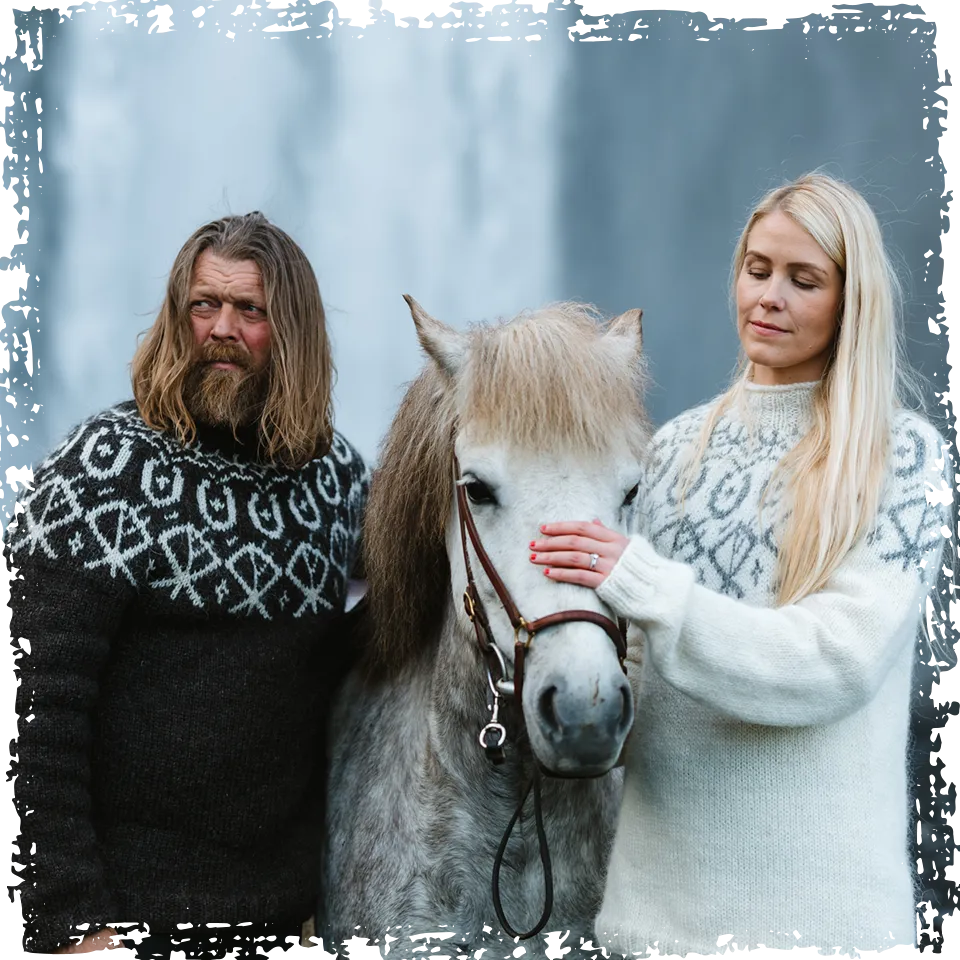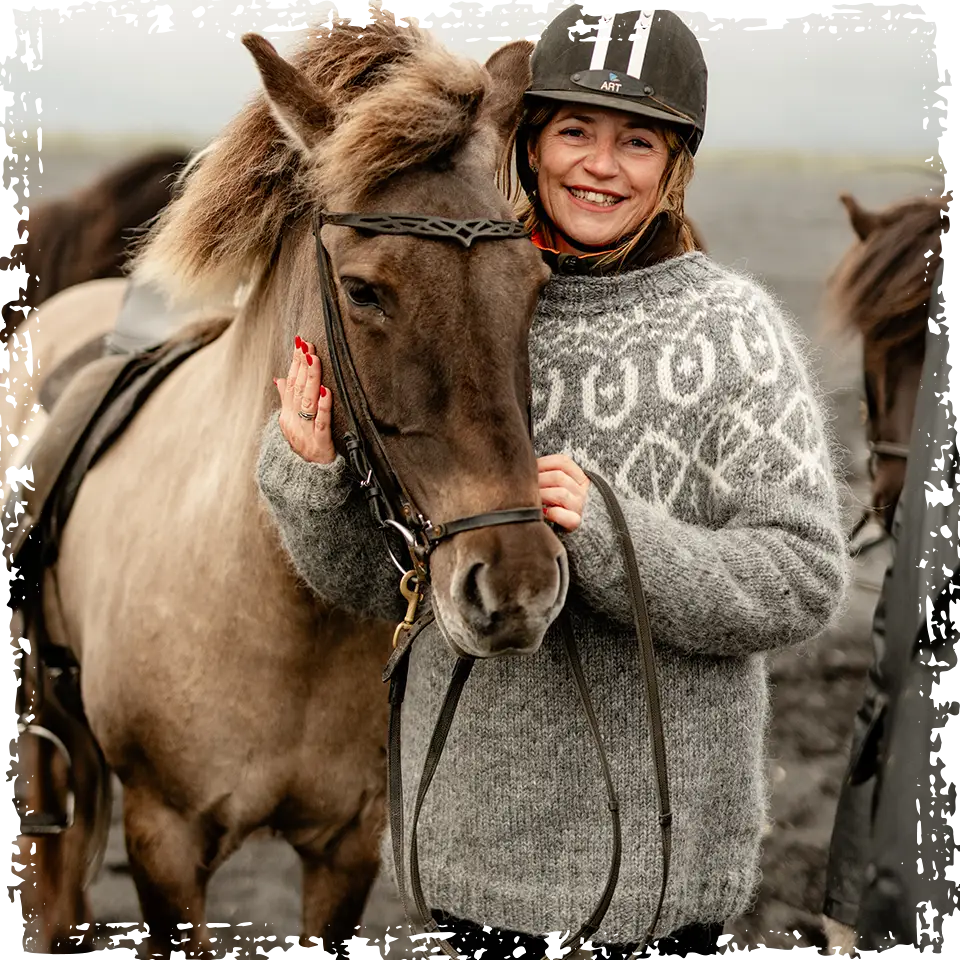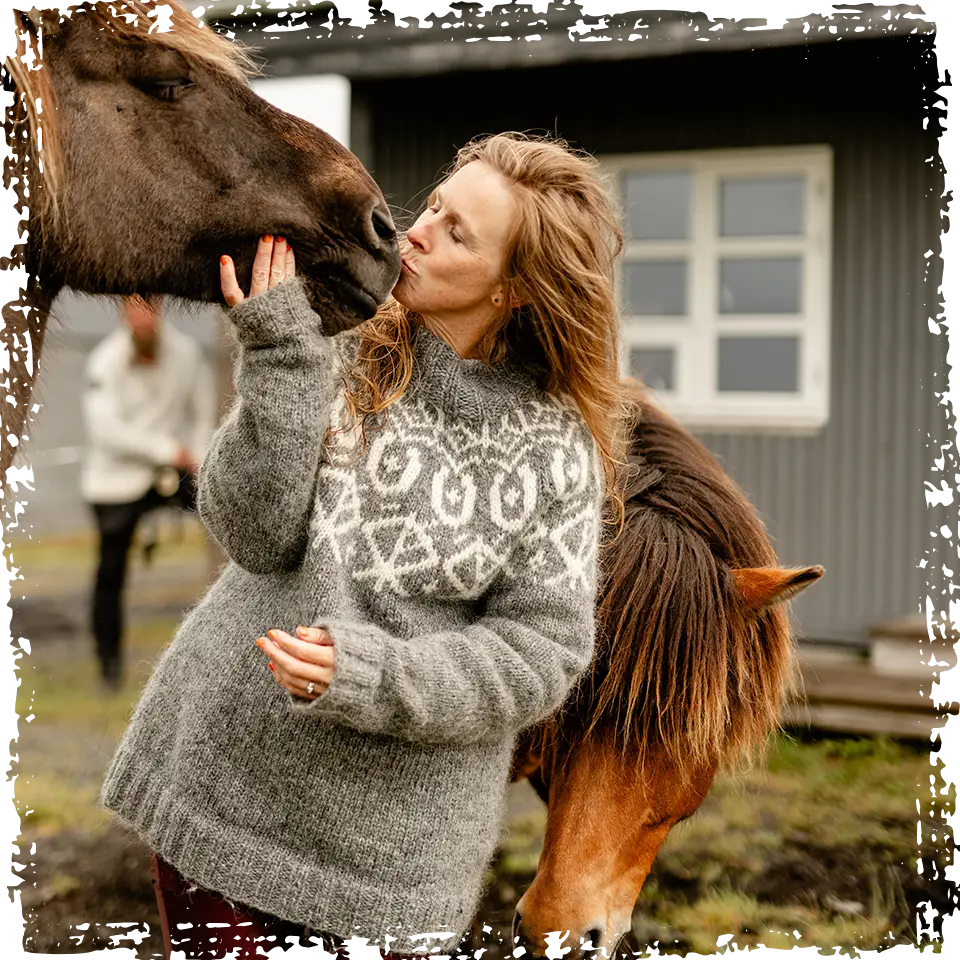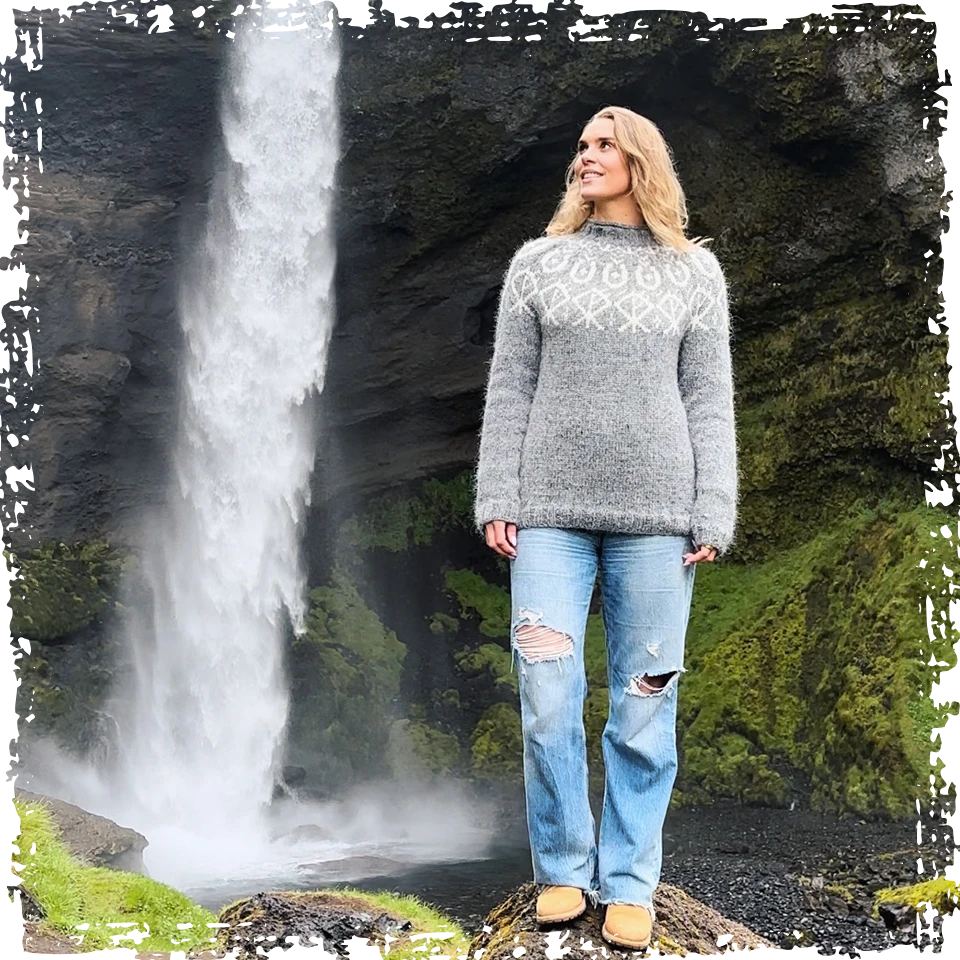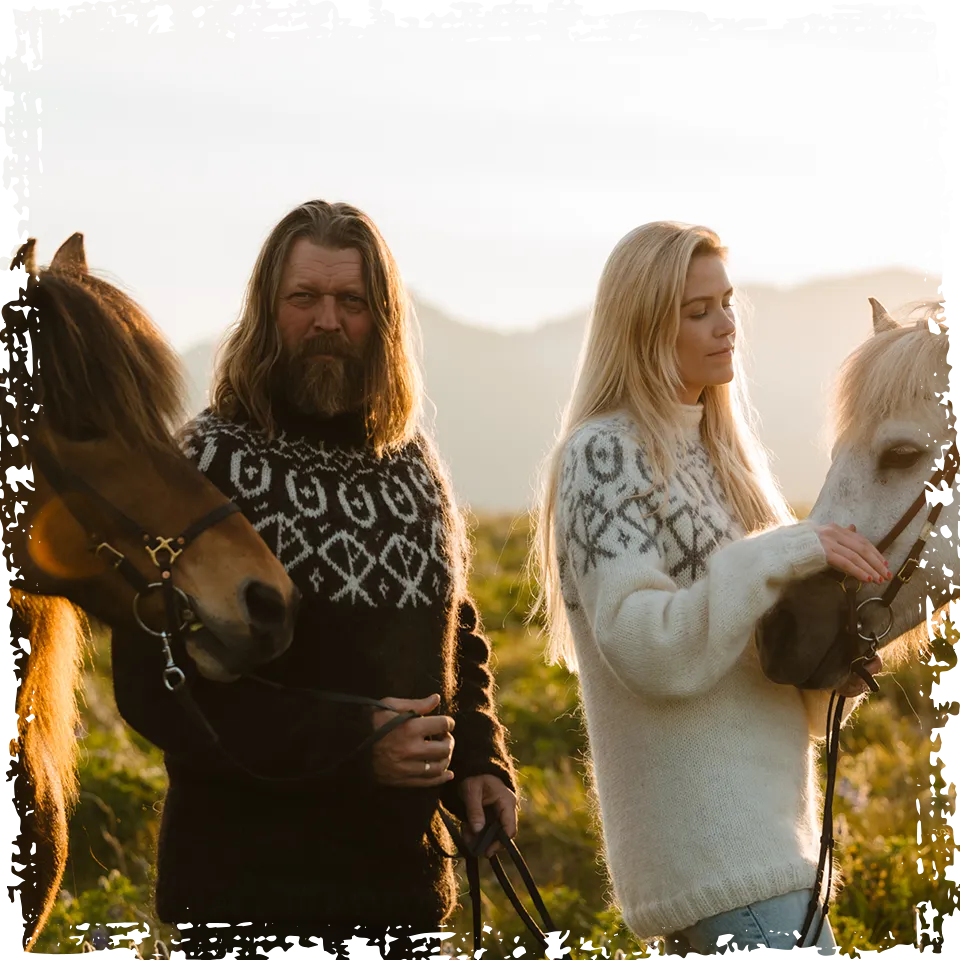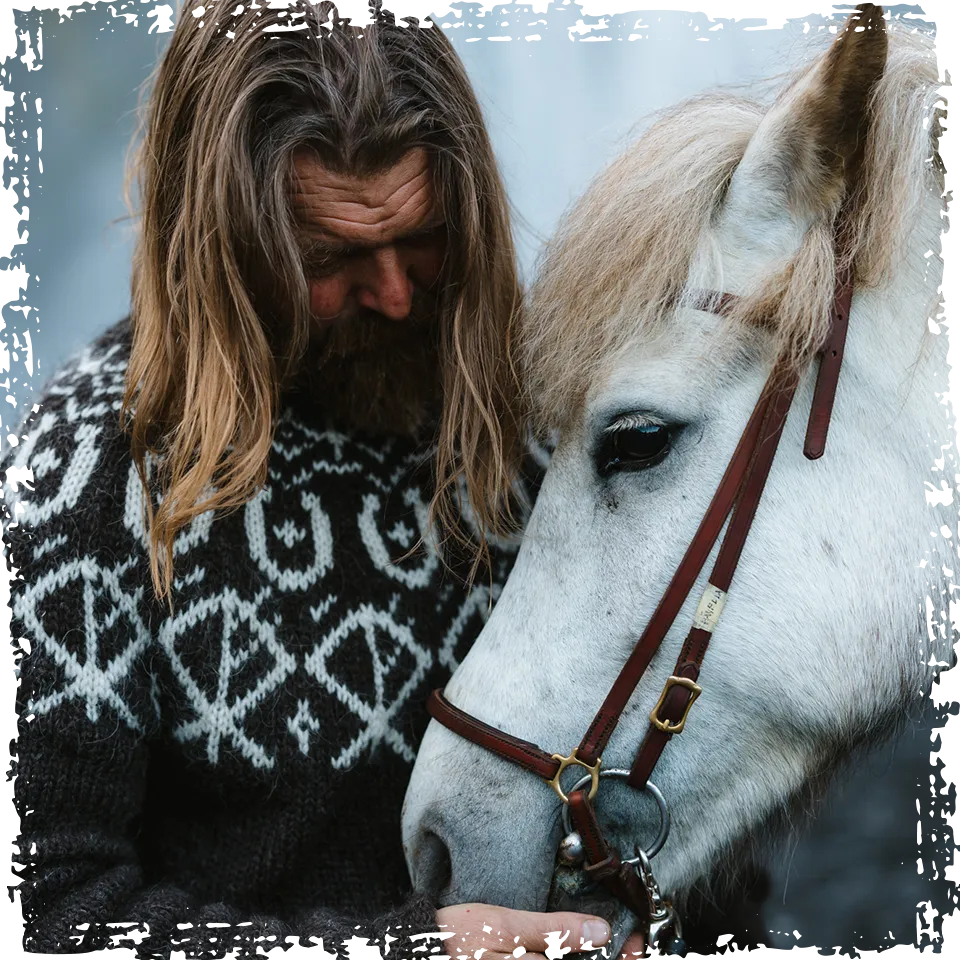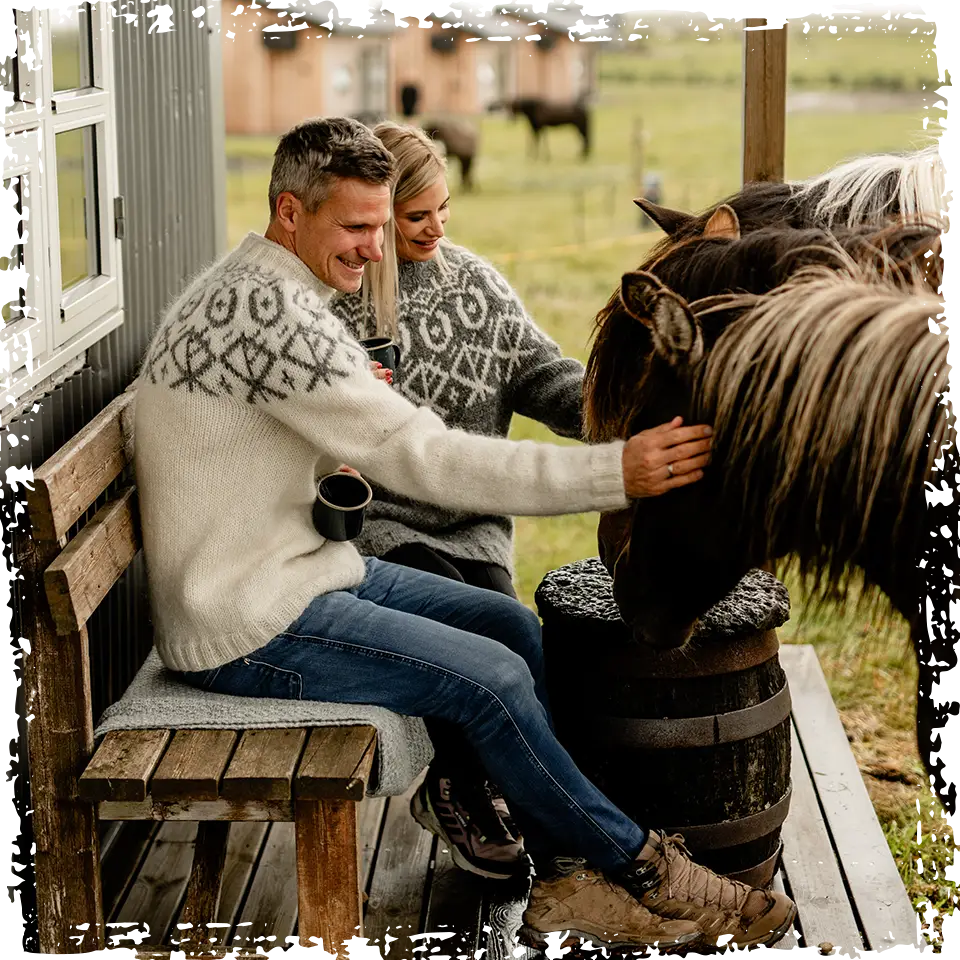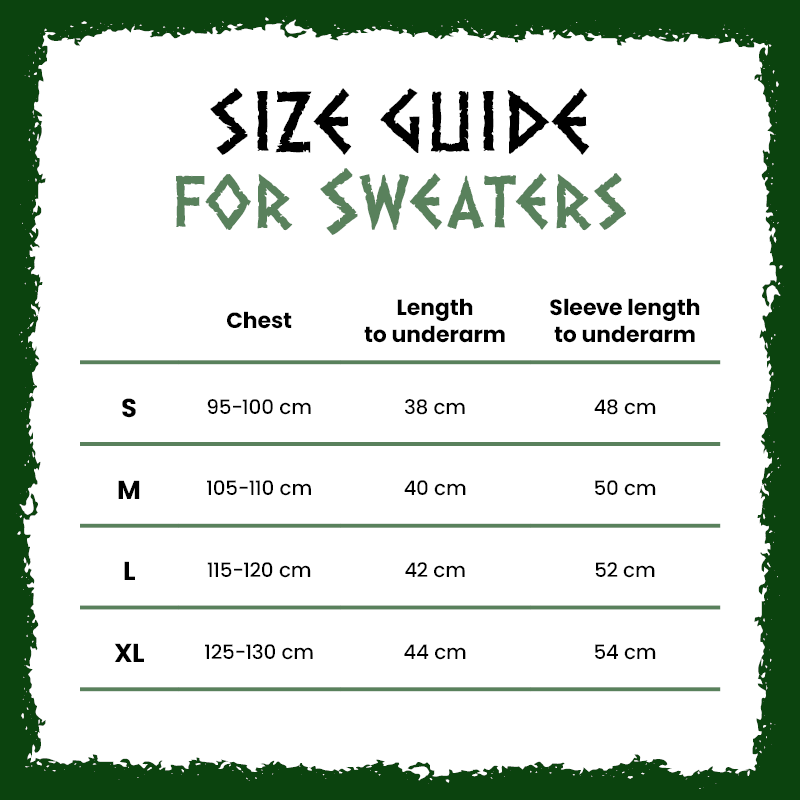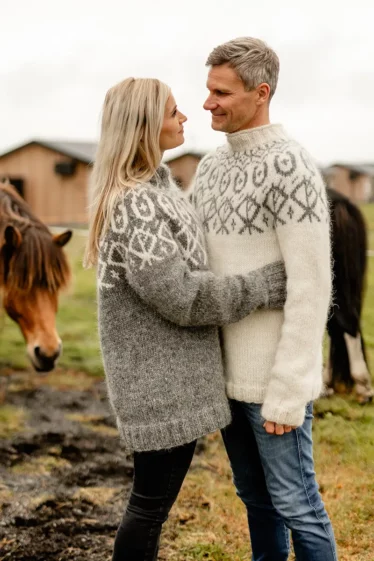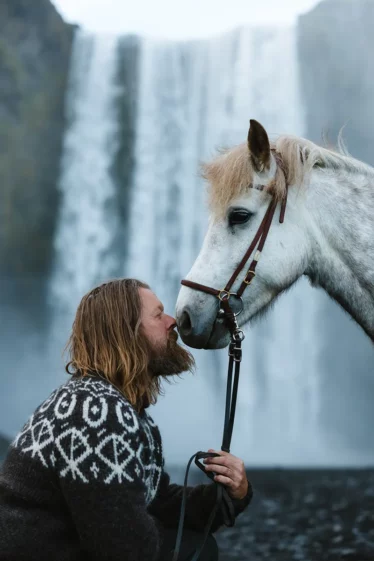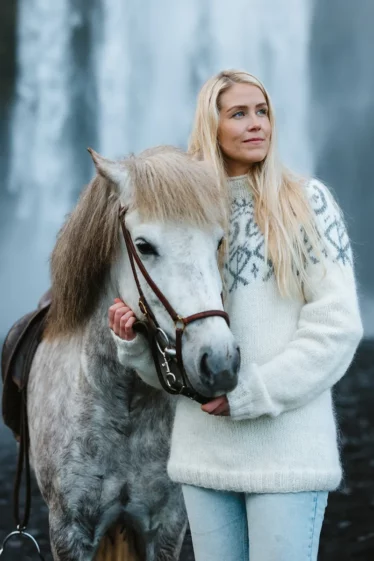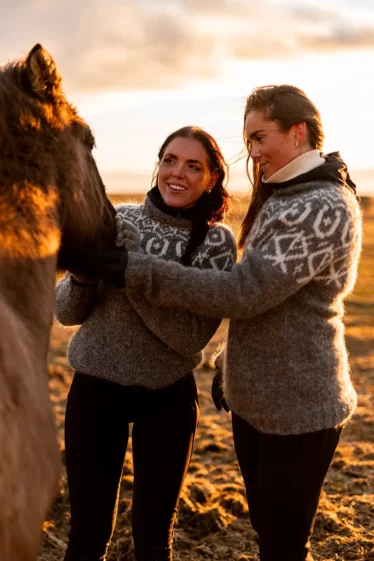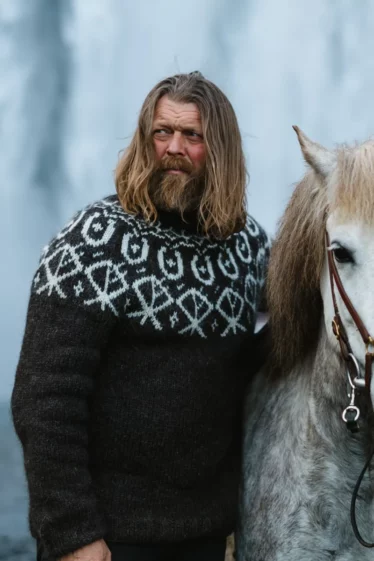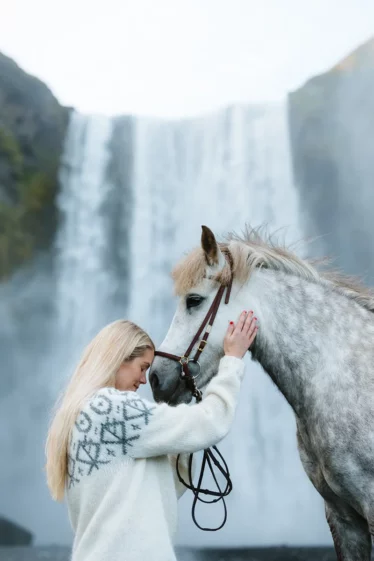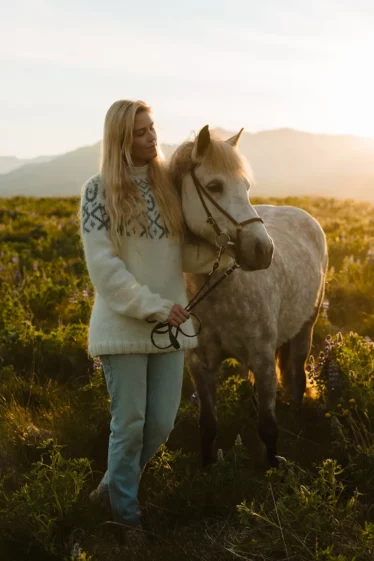Description
Embodying Iceland's sustainable living tradition
Organic wool crafted sweater
After years in the making, we are proud to offer our one-of-a-kind Icelandic sweater (lopapeysa) for purchase with your Mr Iceland experience. Handcrafted with uniquely textured, locally sourced organic Icelandic sheep wool, our sweater embodies our farm’s spirit: harmony with nature, sustainability, and connection with the land.
When designing this sweater, we wanted to exemplify the traditions of sustainable living that we have upheld since our establishment. This is why this sweater is crafted from locally sourced organic wool from a neighboring sheep farm, keeping to the original colors of the sheep wool.
At our farm, we combat biodiversity loss by adopting nature-positive production practices such as minimal tillage and organic farming keeping. The production of our sweater is no different.
Woven in its threads are the runes, ancient symbols of power and protection. Our design incorporates a bind rune, two runes drawn together for a specific purpose. The runes we chose represent Fenrir, an enormous wolf in Norse Mythology. The gods of Asgard feared Fenrir and his strength, so they bound him in a magical ribbon where he would remain until Ragnarök, the doomsday of the gods prophesied in the Eddic text Völuspa.
The wolf symbolizes nature’s unbridled passion, freedom, and adaptability. Like nature, the wolf cannot be controlled. To coexist with it requires respect, adaptation, and harmony.
Our sweater’s design and craftsmanship reflect these traits while adhering to the traditions that make Iceland distinct. It symbolizes our respect and awe for nature’s power, the definition of the Mr Iceland experience, and our pagan legacy.
Iceland is dynamic, rich in rugged landscapes, lively volcanic activity, and unforgiving weather. It is beautiful and harsh, requiring an innovative and adaptable attitude to survive. Living on a farm welcomes you to nature’s rhythms daily, and the Icelandic horses exemplify the resilient spirit it takes to thrive here.
The lopapeysa is a distinct garment that symbolizes Icelanders’ innovative spirit. Whether venturing into the highlands or out on horseback, the warm and water-repellent lopapeysa is ideal for your journey and beyond.
Icelanders’ settlement and this special sweater would not have been possible without the Icelandic sheep, the source of our organic wool.
Frequently asked questions
If you can’t find what you are looking for about our sweaters, contact us.
What makes Icelandic wool sweaters unique?
Icelandic wool sweaters, known as lopapeysa, are made from Icelandic sheep’s wool, which is both lightweight and incredibly warm. The unique double-layer structure makes them water-resistant, breathable, and perfect for Iceland’s changing weather.
Are Mr. Iceland’s wool sweaters handmade?
Yes! Our Icelandic wool sweaters are handmade by local artisans, using traditional techniques passed down through generations. Every sweater is crafted with care, making each one unique.
What patterns are common in Icelandic wool sweaters?
Traditional lopapeysa sweaters feature circular yoke patterns inspired by Iceland’s nature, including snowflakes, mountains, and geometric designs. These patterns are iconic and symbolize Icelandic heritage.
How do I care for my Icelandic wool sweater?
To care for your Icelandic wool sweater, hand wash it with mild detergent in lukewarm water, then lay it flat to dry. Avoid machine washing or tumble drying, as this can damage the delicate fibers.
Are Icelandic wool sweaters itchy?
Not at all! While Icelandic wool is naturally robust, the inner layer of wool used in our sweaters is soft and comfortable. Many customers find them cozy enough to wear directly on the skin.
Why is Icelandic wool sustainable?
Icelandic wool is 100% natural, biodegradable, and renewable. The sheep graze freely in Iceland’s pristine landscapes, and traditional wool production uses minimal chemicals, making it an eco-friendly choice.
Can I buy Mr. Iceland wool sweaters online?
Yes! Visit our online store to browse our collection of authentic Icelandic wool sweaters. We ship worldwide, so you can enjoy a piece of Iceland no matter where you are.
Are Icelandic wool sweaters suitable for outdoor activities?
Absolutely! Icelandic wool sweaters are naturally water-resistant, windproof, and warm, making them perfect for hiking, camping, or exploring Iceland’s rugged terrain.
What sizes are available for Mr. Iceland wool sweaters?
We offer a wide range of sizes for men, women, and children. Refer to our size chart on the product page to ensure the perfect fit. If you have questions, we’re happy to help!
Why should I choose a Mr. Iceland wool sweater?
By choosing a Mr. Iceland wool sweater, you’re supporting local artisans and embracing authentic Icelandic craftsmanship. Each sweater is sustainably made, durable, and designed to keep you warm in style.
How to wash and take care of your Icelandic wool sweater?
To keep your Icelandic wool sweater in excellent condition, follow these steps:
- Hand wash only
Use lukewarm water (30°C/86°F) and a mild wool detergent. Avoid wringing or twisting the sweater. - Rinse thoroughly
Rinse with clean lukewarm water until all detergent is gone. - Reshape and dry flat
Lay your sweater flat on a clean towel, reshape it to its original size, and air dry. Avoid hanging, as this can stretch the fabric. - Avoid heat and agitation
Do not use hot water, washing machines, or dryers, as these can shrink or damage the fibers. - Spot clean when possible
For minor stains, spot clean instead of washing the whole sweater. - Remove odors naturally
Air out your sweater in a well-ventilated space. Icelandic wool has antibacterial properties and doesn’t need frequent washing. - Use a wool brush
Gently remove lint or surface debris with a wool brush. - Store properly
Fold your sweater instead of hanging it, and use moth repellents like cedar blocks or lavender sachets during storage.
By following these tips, your sweater will remain warm, cozy, and beautiful for years!
